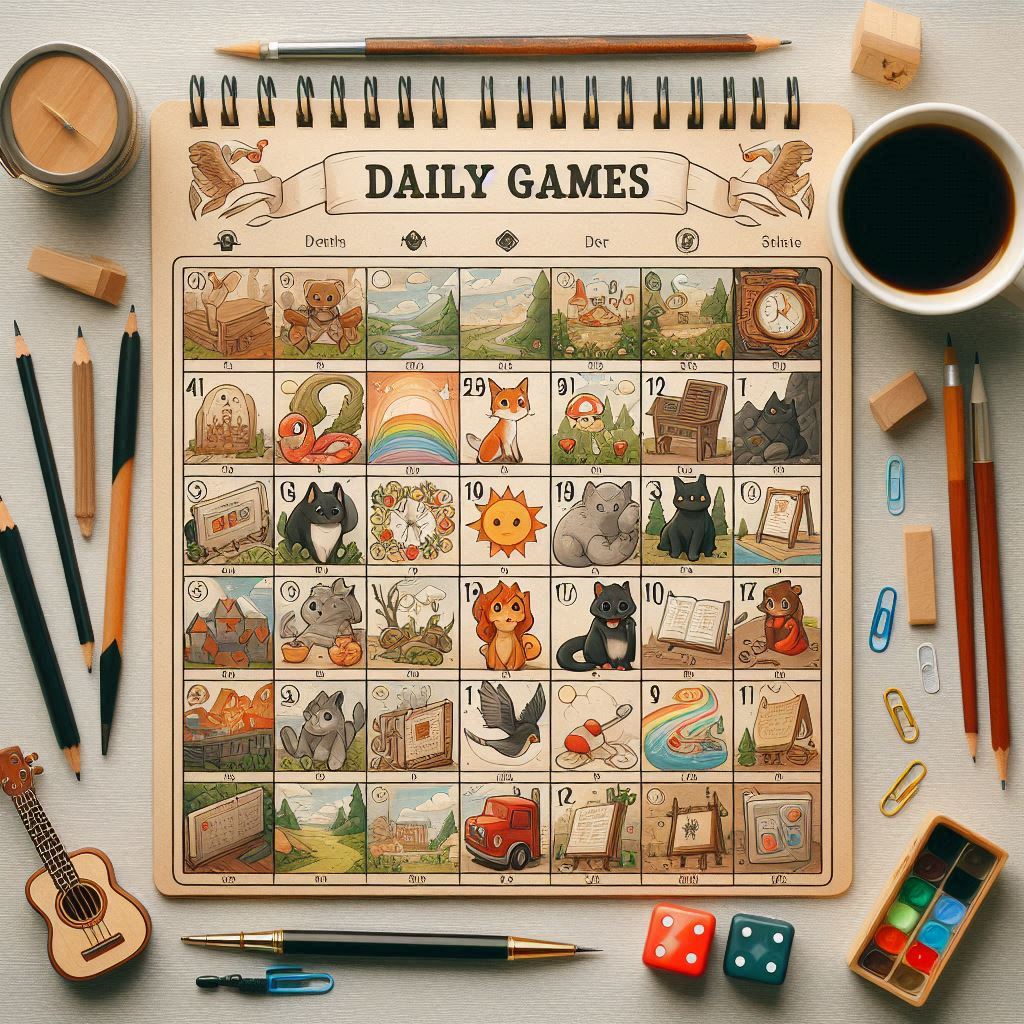Becoming a better artist isn’t just about grinding through anatomy studies and perspective grids—it’s also about keeping your creativity loose and your problem-solving skills sharp! The best way to do that? Play games. No, not just video games (though those can be inspiring too), but quick, daily challenges that push your artistic brain in new directions. Here are five fun and effective games you can play every day to boost your artistic skills:
1. The 30-Second Silhouette Game ⏳
Skill Focus: Gesture, Composition, and Shape Language
How to Play:
- Grab a timer and set it to 30 seconds.
- Find a reference photo or imagine a random subject (a cat, a knight, a spaceship, anything).
- Instead of drawing details, block out its silhouette in black.
- Move on to a new one as soon as the timer dings!
Why It Works:
Silhouettes are the backbone of strong character and environment design. By training yourself to capture form quickly, you’ll start thinking about clarity, flow, and dynamic poses rather than getting lost in details.
2. The “Can’t Lift Your Pencil” Challenge ✏️
Skill Focus: Line Confidence and Control
How to Play:
- Choose a simple object or character to draw.
- Draw the entire thing without ever lifting your pen or pencil off the paper.
- Try to keep it readable while embracing the chaos!
Why It Works:
This game forces you to think ahead and make deliberate marks. If your lines tend to be sketchy or hesitant, this exercise will train you to be more confident and precise with every stroke.
3. The Color Thief 🎭
Skill Focus: Color Theory and Observation
How to Play:
- Find an image with colors you love—could be a painting, a movie still, or a nature photo.
- Using an eyedropper tool (or your eyeballs, if you’re feeling brave), pick three to five key colors from the image.
- Create a quick piece using ONLY those colors.
Why It Works:
Limiting your palette forces you to think more about value and contrast rather than relying on an endless range of colors. Plus, you start to develop a sense for color harmony and how different shades work together.
4. The “Wrong-Handed” Doodle Challenge ✋
Skill Focus: Brain-Body Coordination and Letting Go of Perfectionism
How to Play:
- Pick a subject to draw—something simple like a face, animal, or object.
- Draw it entirely with your non-dominant hand.
- Laugh at the results (optional, but recommended).
Why It Works:
Using your weaker hand forces your brain to work in a totally different way, increasing your spatial awareness and coordination. Plus, it reminds you that not every piece has to be perfect—sometimes, wonky lines are the best lines.
5. The Memory Sketch Game 🧠
Skill Focus: Observation and Recall
How to Play:
- Look at a reference photo for 10 seconds—absorb as many details as possible.
- Close the image and try to sketch it from memory.
- Check back and see what you got right (and hilariously wrong).
Why It Works:
This trains your visual memory, an essential skill for drawing from imagination. The more you play, the better you’ll get at remembering key details, proportions, and lighting in your work.
Final Thoughts: Make It a Habit!
These mini-games are designed to be fast, fun, and effective. Try doing at least one of them each day—mix them up, challenge yourself, and most importantly, enjoy the process.
Your art journey isn’t just about improvement; it’s about keeping the magic alive. So grab your sketchbook, set a timer, and start playing! 🎨🔥

Leave a Reply